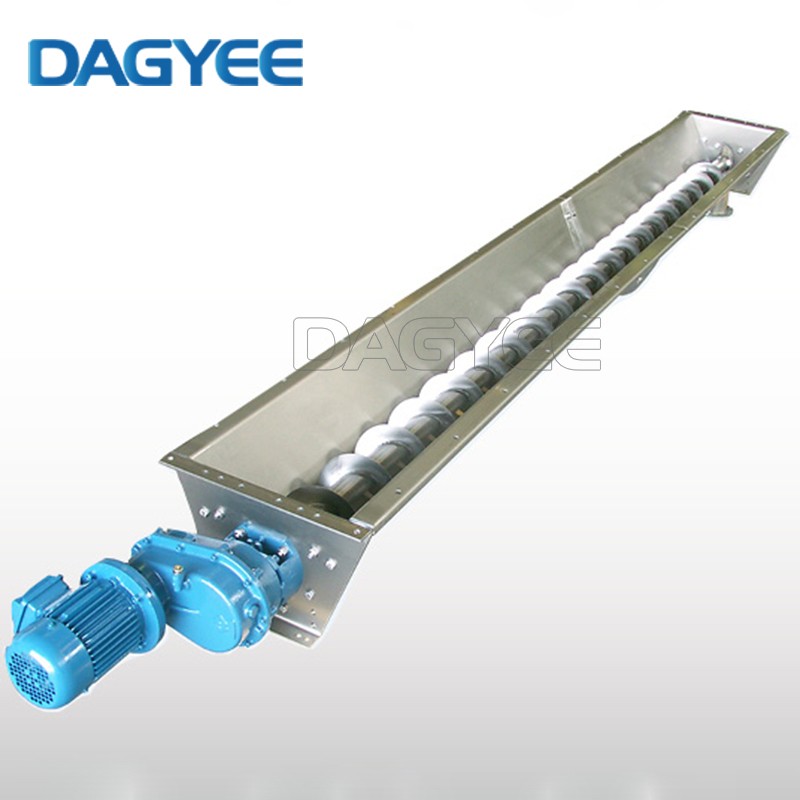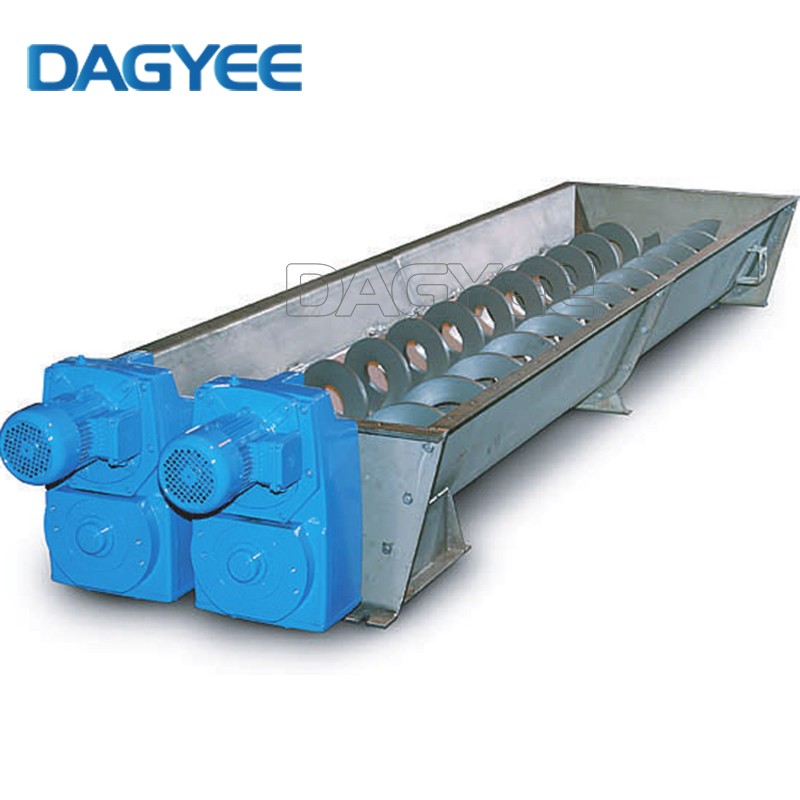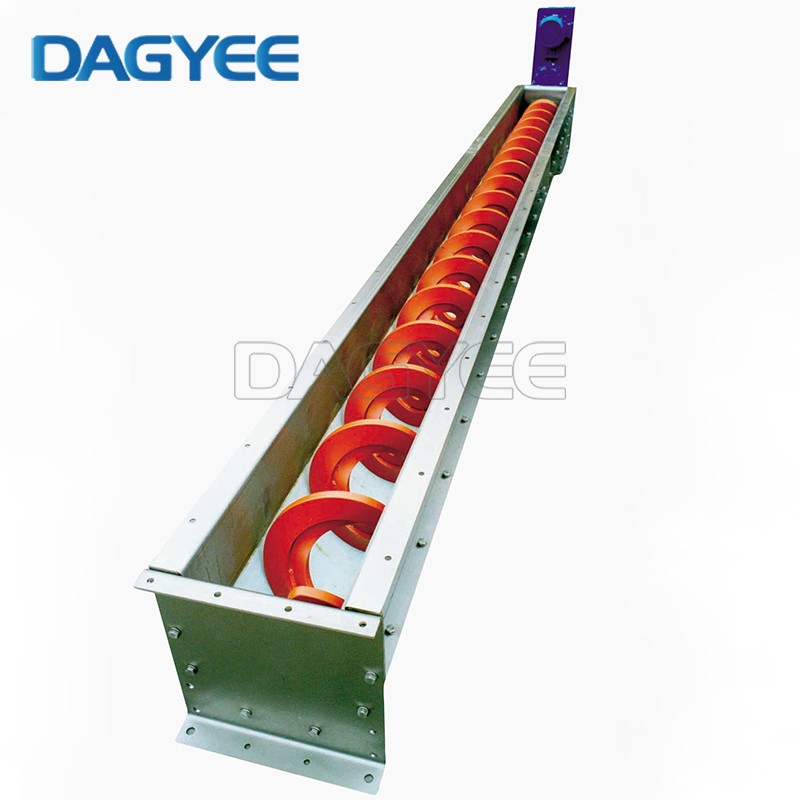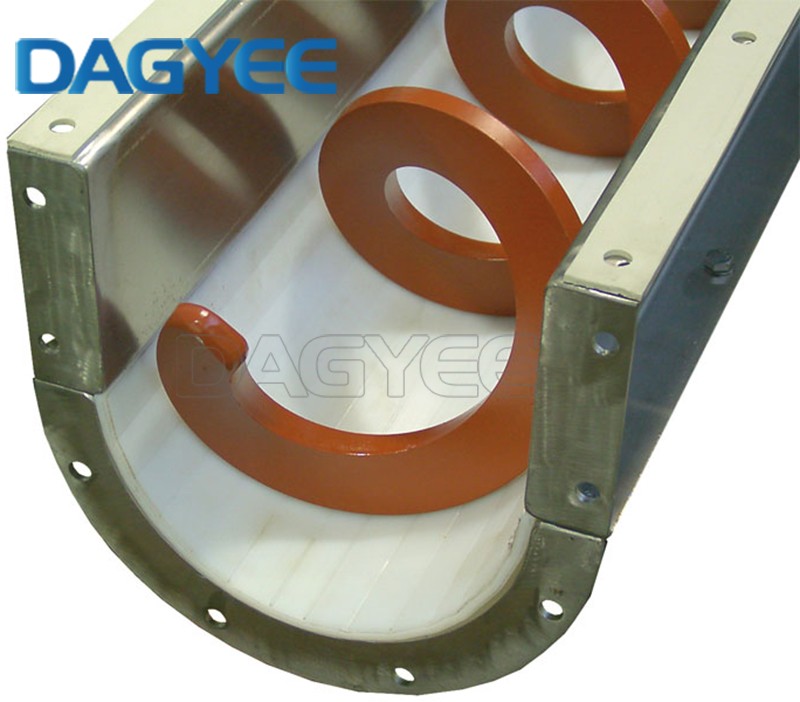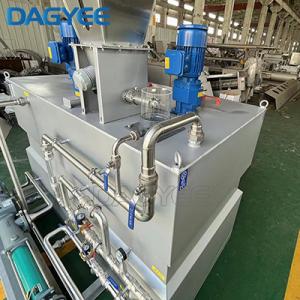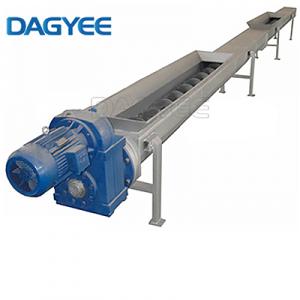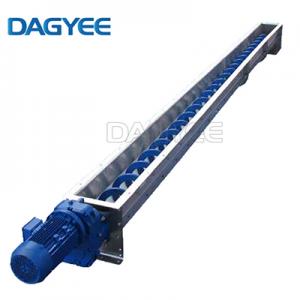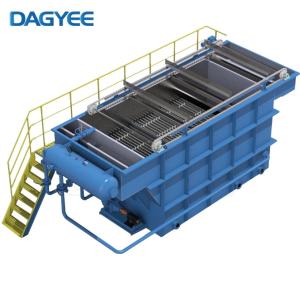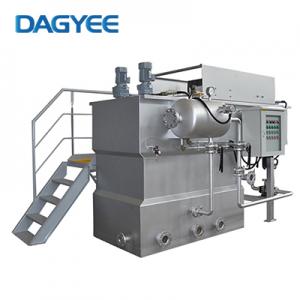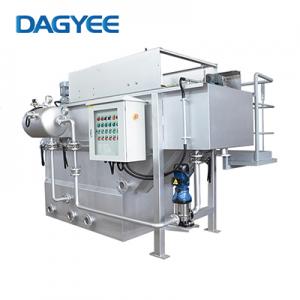Description
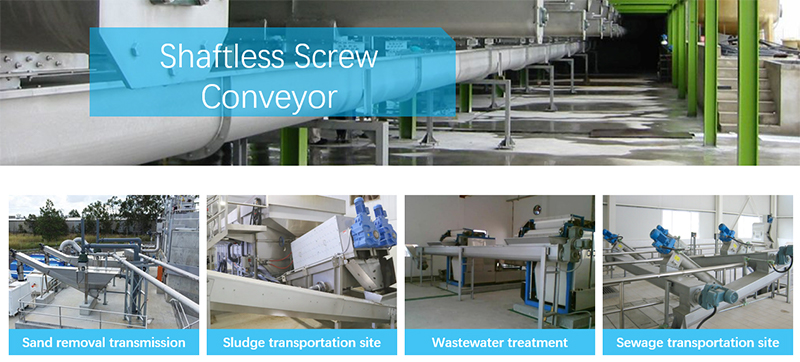
Shaftless Screw Conveyor Description
Shaftless screw conveyor is a kind of environmental protection equipment that does not have a central axis and is rotated by a screw body to transport materials. It is mainly used to transport sludge and screen slag from various sewage treatment plants. The conveying direction of the conveyor is determined by the helical direction of the screw blades Conveying, the groove is provided with an anti-wear nylon protective bushing. For materials that are difficult to convey, shaftless screw conveyor is a mature and common solution. It is used in conjunction with grid decontamination machines and sludge dewatering machines. It is used for conveying grid decontamination machines and rotary grids in sewage treatment plants. The screen slag and filter press mud cake and other materials are very ideal conveying equipment. The sludge and screen slag can be transported to the designated location, saving manpower and material resources, and high work efficiency. Shaftless screw conveyor can be closed to prevent environmental pollution.
Shaftless screw conveyor is composed of driving device, bracket, conveying screw, U-shaped groove, lining plate, cover plate, feeding port, etc. The grid slag discharged by the grid decontamination machine enters the feeding area, and the grid slag is sent to the grid slag box.
Compared with the traditional shafted screw conveyor, the shaftless screw conveyor has the following outstanding advantages due to the design without a central shaft and the use of a certain flexible integral steel screw to push the material: strong anti-winding. There is no central axis interference, and it has special advantages for conveying belt-shaped and easy-to-wind materials.
Shaftless Screw Conveyor Structure
Shaftless screw conveyor is mainly composed of shaftless screw, U-shaped spiral groove, cover plate, lining plate, inlet and outlet, discharge outlet and driving device.
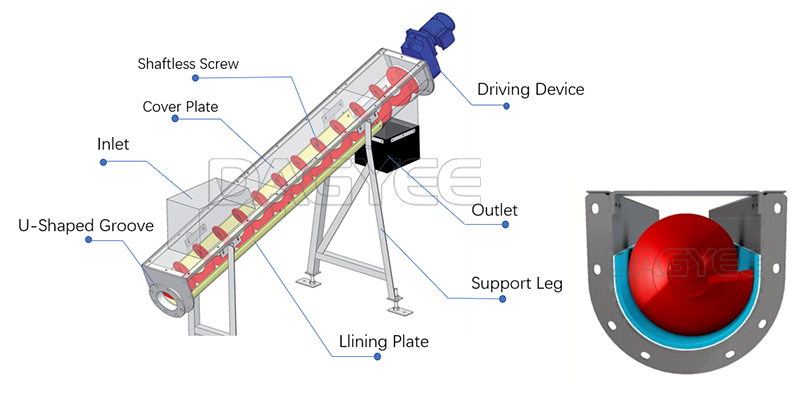
Shaftless Screw Conveyor Type
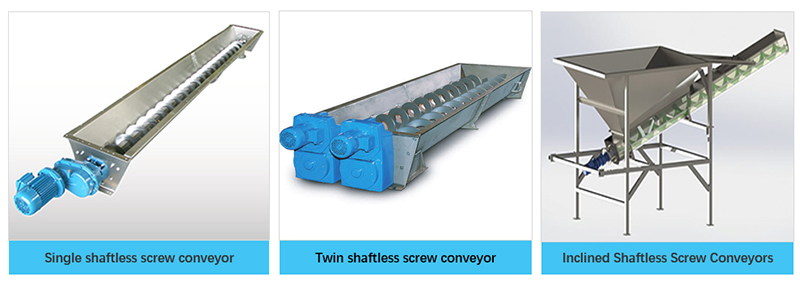
Single shaftless screw conveyor screw shaft, without mixing and stirring functions.
Twin Shaftless Screw Conveyor It adopts double screw blades with mixing and stirring functions. The two screw blades rotate in opposite directions to avoid material blocking. The conveying capacity is 1.5-2 times that of a single shaft.
Inclined Shaftless Screw Conveyor mainly used for conveying materials at a small angle of 25°.
Shaftless Screw Conveyor Technical
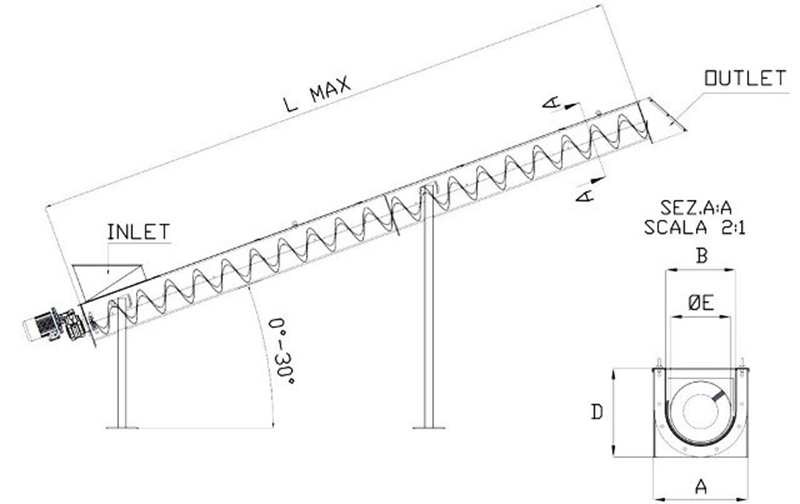
DLS
Model
Capacities
(m3/h)
Length
Speed
Size
00
150
300
(m)
(r/min)
A(mm)
B(mm)
B0(mm)
DLS200
2
1.4
0.9
10
20
200
310
270
DLS260
3.5
2.5
1.5
10
20
260
370
340
DLS320
9
6.5
4.1
15
20
320
430
400
DLS355
11.5
7.8
5.5
20
20
355
465
435
DLS420
15
11
7.5
20
20
420
530
500
DLS500
30
25
21
20
20
500
560
680
Shaftless Screw Conveyor Benefits
- Shaft-less structure, less contact with the residue, low friction, the extrusion efficiency can be improved. No clogging and no winding.
- Made of stainless steel with high strength, good corrosion resistance and long service life.
- Driving device adopts axle direct drive mode, which is stable, reliable, and energy saving.
- Outlet is assembled with a spring baffle to increase the extrusion pressure and increase the dehydration rate.
- Except for the inlet and outlet, the rest structure is closed, and the environment is clean and sanitary.
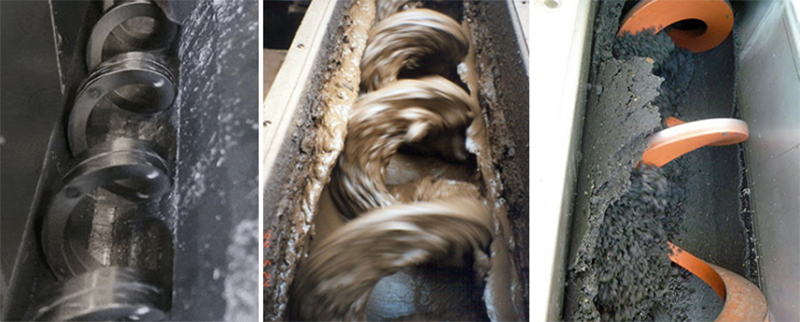
Shaftless screw conveyors VS Shafted Screw Conveyors
Conveying materials
Shaftless is suitable for conveying sludge, household garbage, grid slag and other viscous, entangled materials and massive materials. It is precisely because the design of the shaftless screw conveyor without a central axis has great advantages for these materials.
The shaft screw conveyor is suitable for conveying materials: powder, small particle materials, etc. If you convey viscous
materials such as sludge, it will stick to the inner tube shaft and blades, and the conveying block materials are easy to jam.
Conveying form
Shaftless screw conveyor is suitable for: horizontal conveying, and the large inclination angle should not exceed 20°, according to the actual usage.
The shaft screw conveyor is suitable for: horizontal conveying, inclined conveying, and vertical conveying.
Conveying capacity
Due to the use of shaftless, the single-machine conveying length of the shaftless screw conveyor can reach 60 meters, and the conveying capacity is 1.5 times that of the traditional shafted screw conveyor with the same diameter
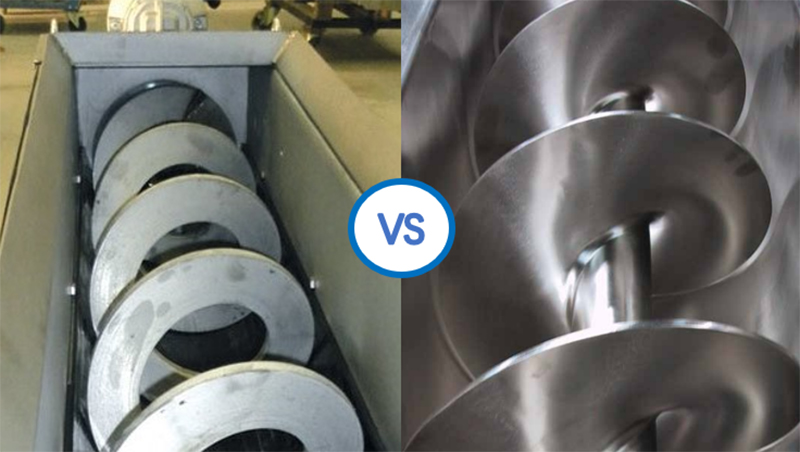
Shaftless Screw Conveyors Application
Shaftless Screw (Spiral) Conveyors are specially designed for handling difficult, heterogeneous materials such as urban solid waste, screenings and floating matter, de-watered, thickened, conditioned sludge, packaged food, creams or pastes, as well as waste from: meat, fish, fruit and vegetable processing.
The main sectors of application are: wastewater treatment, sugarhouse rejects, fish industry, solid waste treatment, fruit and vegetable processing, beverage industry, pulp and paper, chemicals, food industry in general, meat processing plants, abattoirs/ slaughterhouses, restaurants, canteens, catering in general.

